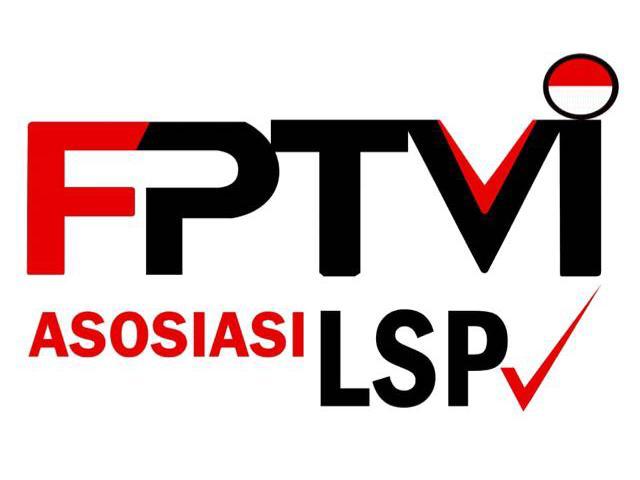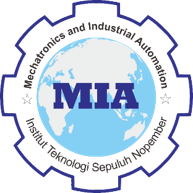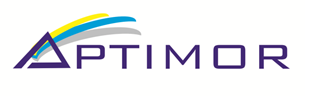Comprehensive Study on Cr(VI) Adsorption and Regeneration Behavior of Alkali-Treated Wood Charcoal: Isotherms and Kinetics Models
Abstract
Keywords
Full Text:
PDFReferences
J. P. Castro et al., “Massaranduba sawdust: A potential source of charcoal and activated carbon,” Polymers (Basel)., vol. 11, no. 8, pp. 1–14, 2019.
X. Wang, Z. Guo, Z. Hu, and J. Zhang, “Recent advances in biochar application for water and wastewater treatment: A review,” PeerJ, vol. 8, 2020.
A. Chandrasekaran, S. Subbiah, P. Bartocci, H. Yang, and F. Fantozzi, “Carbonization using an Improved Natural Draft Retort Reactor in India: Comparison between the performance of two woody biomasses, Prosopis juliflora and Casuarina equisetifolia,” Fuel, vol. 285, p. 119095, 2021.
G. Enaime, A. Baçaoui, A. Yaacoubi, and M. Lübken, “Biochar for Wastewater Treatment—Conversion Technologies and Applications,” 2020.
N. Chaukura, T. M. Masilompane, W. Gwenzi, and A. K. Mishra, “Biochar-Based Adsorbents for the Removal of Organic Pollutants from Aqueous Systems,” in Emerging Carbon‐Based Nanocomposites for Environmental Applications, 2020, pp. 147–174.
W. Gwenzi, N. Chaukura, C. Noubactep, and F. N. D. Mukome, “Biochar-based water treatment systems as a potential low-cost and sustainable technology for clean water provision,” J. Environ. Manage., vol. 197, pp. 732–749, 2017.
T. K. Das and A. Poater, “Review on the use of heavy metal deposits from water treatmentwaste towards catalytic chemical syntheses,” Int. J. Mol. Sci., vol. 22, no. 24, 2021.
L. Cervera-Gabalda and C. Gómez-Polo, “Magnetic Fe/Fe3C@C Nanoadsorbents for Efficient Cr (VI) Removal,” 2022.
H. Haeril, F. D. I. Sawali, and M. A. Afandy, “Phytoremediation of Cr(VI) from Aqueos Solution by Pistia stratiotes L.: Efficiency and Kinetic Models,” J. Tek. Kim. dan Lingkung., vol. 8, no. 1, pp. 25–35, 2024.
D. Mahringer, S. S. Zerelli, U. Dippon, and A. S. Ruhl, “Pilot scale hexavalent chromium removal with reduction, coagulation, filtration and biological iron oxidation,” Sep. Purif. Technol., vol. 253, no. June, p. 117478, 2020.
M. L. Rahman et al., “Poly(hydroxamic acid) ligand from palm-based waste materials for removal of heavy metals from electroplating wastewater,” J. Appl. Polym. Sci., vol. 138, no. 2, pp. 1–16, 2021.
K. K. Onchoke and S. A. Sasu, “Determination of Hexavalent Chromium (Cr(VI)) Concentrations via Ion Chromatography and UV-Vis Spectrophotometry in Samples Collected from Nacogdoches Wastewater Treatment Plant, East Texas (USA),” Adv. Environ. Chem., vol. 2016, no. Iii, pp. 1–10, 2016.
M. E. Mahmoud, M. F. Amira, S. M. Seleim, and A. K. Mohamed, “Amino-decorated magnetic metal-organic framework as a potential novel platform for selective removal of chromium (Vl), cadmium (II) and lead (II),” J. Hazard. Mater., vol. 381, no. Vl, p. 120979, 2020.
J. Bayuo, “An extensive review on chromium (vi) removal using natural and agricultural wastes materials as alternative biosorbents,” J. Environ. Heal. Sci. Eng., vol. 19, no. 1, pp. 1193–1207, 2021.
V. Yogeshwaran and A. K. Priya, “Removal of Hexavalent Chromium (Cr6+) Using Different Natural Adsorbents - A Review,” J. Chromatogr. Sep. Tech., vol. 08, no. 06, pp. 1–20, 2016.
A. Khandelwal, N. Narayanan, E. Varghese, and S. Gupta, “Linear and Nonlinear Isotherm Models and Error Analysis for the Sorption of Kresoxim-Methyl in Agricultural Soils of India,” Bull. Environ. Contam. Toxicol., vol. 104, no. 4, pp. 503–510, 2020.
R. Sahin and K. Tapadia, “Comparison of linear and non-linear models for the adsorption of fluoride onto geo-material: Limonite,” Water Sci. Technol., vol. 72, no. 12, pp. 2262–2269, 2015.
Markandeya, S. P. Shukla, and G. C. Kisku, “Linear and non-linear kinetic modeling for adsorption of disperse dye in batch process,” Res. J. Environ. Toxicol., vol. 9, no. 6, pp. 320–331, 2015.
I. Umar, N. Bala, N. Danlami, and A. Y. Abdulfatah, “Comparison of Linear and Non-Linear Methods of Freundlich and Langmuir Isotherm Models for the Adsorption of Lead Using Sugarcane Bagasse,” Noble Int. J. Sci. Res., vol. 1, no. 5, pp. 69–72, 2017.
J. Serafin and B. Dziejarski, “Application of isotherms models and error functions in activated carbon CO2 sorption processes,” Microporous Mesoporous Mater., vol. 354, no. March, 2023.
M. Shafiq, A. A. Alazba, and M. T. Amin, “Kinetic and isotherm studies of ni2+and pb2+adsorption from synthetic wastewater using eucalyptus camdulensis—derived biochar,” Sustain., vol. 13, no. 7, 2021.
T. M. Ting, M. M. Nasef, and K. Hashim, “Linear and non-linear regression analysis of boron adsorption kinetics on new radiation grafted fibrous adsorbent,” Appl. Mech. Mater., vol. 625, pp. 245–248, 2014.
N. Ayawei, A. N. Ebelegi, and D. Wankasi, “Modelling and Interpretation of Adsorption Isotherms,” J. Chem., vol. 2017, 2017.
F. Wahid, I. U. Mohammadzai, A. Khan, Z. Shah, W. Hassan, and N. Ali, “Removal of toxic metals with activated carbon prepared from Salvadora persica,” Arab. J. Chem., vol. 10, pp. S2205–S2212, 2017.
M. S. Fadila, M. A. Afandy, S. Suhirman, and M. I. Al Fuady, “Studi Kinetika dan Penentuan Dosis Optimum Koagulan FeCl3 dalam Menurunkan Konsentrasi Cu2+ pada Larutan,” React. J. Res. Chem. Eng., vol. 4, no. 2, pp. 60–67, 2023.
R. Saha, K. Mukherjee, I. Saha, A. Ghosh, S. K. Ghosh, and B. Saha, “Removal of hexavalent chromium from water by adsorption on mosambi (Citrus limetta) peel,” Res. Chem. Intermed., vol. 39, no. 5, pp. 2245–2257, 2013.
J. Qu et al., “KOH-activated porous biochar with high specific surface area for adsorptive removal of chromium (VI) and naphthalene from water: Affecting factors, mechanisms and reusability exploration,” J. Hazard. Mater., vol. 401, no. June, p. 123292, 2021.
C. H. Chia, S. Zakaria, M. S. Sajab, and M. J. Saad, “Activated Carbon Produced from Rice Husk by NaOH and KOH Activation and its Adsorption in Methylene Blue,” Adv. Agric. Food Res. J., pp. 1–13, 2022.
Y. Guo, K. Yu, Z. Wang, and H. Xu, “Effects of activation conditions on preparation of porous carbon from rice husk [1],” Carbon N. Y., vol. 41, no. 8, pp. 1645–1648, 2003.
M. A. Afandy and F. D. I. Sawali, “Adsorption of Chromium Hexavalent in Aqueous Solutions Using Acid-Activated Wood Charcoal: Isotherm and Kinetics Study,” J. Ilm. Tek. Kim., vol. 8, no. 1, pp. 1–14, 2024.
M. Musah, Y. Azeh, J. Mathew, M. Umar, Z. Abdulhamid, and A. Muhammad, “Adsorption Kinetics and Isotherm Models: A Review,” Caliphate J. Sci. Technol., vol. 4, no. 1, pp. 20–26, 2022.
M. J. Saad et al., “Comparative adsorption mechanism of rice straw activated carbon activated with NaOH and KOH,” Sains Malaysiana, vol. 49, no. 11, pp. 2721–2734, 2020.
İ. Demiral, C. Samdan, and H. Demiral, “Enrichment of the surface functional groups of activated carbon by modification method,” Surfaces and Interfaces, vol. 22, p. 100873, 2021.
N. N. Mladenović Nikolić et al., “Radiological and Structural Characterization of Raw and Alkali-Activated Wood Ash and Metakaolin Blends,” 2022.
H. Jiao et al., “Structure-property-function relationships of wood-based activated carbon in energy and environment materials,” Sep. Purif. Technol., vol. 353, p. 128607, 2025.
R.-L. Tseng and S.-K. Tseng, “Pore structure and adsorption performance of the KOH-activated carbons prepared from corncob,” J. Colloid Interface Sci., vol. 287, no. 2, pp. 428–437, 2005.
M. S. Hafizuddin, C. L. Lee, K. L. Chin, P. S. H’ng, P. S. Khoo, and U. Rashid, “Fabrication of Highly Microporous Structure Activated Carbon via Surface Modification with Sodium Hydroxide,” 2021.
A. L. Cazetta et al., “NaOH-activated carbon of high surface area produced from coconut shell: Kinetics and equilibrium studies from the methylene blue adsorption,” Chem. Eng. J., vol. 174, no. 1, pp. 117–125, 2011.
A. H. Jawad et al., “Microporous activated carbon developed from KOH activated biomass waste: surface mechanistic study of methylene blue dye adsorption,” Water Sci. Technol., vol. 84, no. 8, pp. 1858–1872, Sep. 2021.
S. Rawat et al., “Remediation of Cr(VI) using a radiation functionalized green adsorbent: Adsorption modelling, mechanistic insights and prototype water purifier demonstration,” J. Water Process Eng., vol. 60, p. 105109, 2024.
Ş. Parlayici and E. Pehlivan, “Comparative study of Cr(VI) removal by bio-waste adsorbents: equilibrium, kinetics, and thermodynamic,” J. Anal. Sci. Technol., vol. 10, no. 1, 2019.
X. Guo et al., “Adsorption mechanism of hexavalent chromium on biochar: Kinetic, thermodynamic, and characterization studies,” ACS Omega, vol. 5, no. 42, pp. 27323–27331, 2020.
J. Yang, B. Huang, and M. Lin, “Adsorption of Hexavalent Chromium from Aqueous Solution by a Chitosan/Bentonite Composite: Isotherm, Kinetics, and Thermodynamics Studies,” J. Chem. Eng. Data, vol. 65, no. 5, pp. 2751–2763, 2020.
DOI: http://dx.doi.org/10.12962%2Fj23378557.v11i2.a22804
Refbacks
- There are currently no refbacks.
This work is licensed under a Creative Commons Attribution 4.0 International License. IPTEK The Journal of Engineering published by Pusat Publikasi Ilmiah, Institut Teknologi Sepuluh Nopember.
Please contact us for order or further information at: email: iptek.joe[at]gmail.com Fax/Telp: 031 5992945. Editorial Office Address: Pusat Riset Building 6th floor, ITS Campus, Sukolilo, Surabaya 60111, Indonesia.








